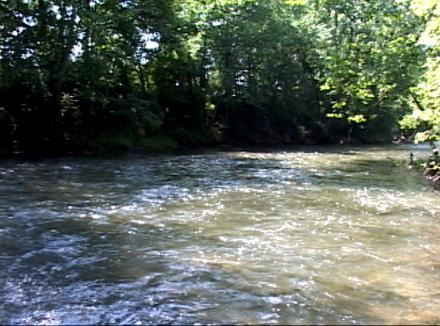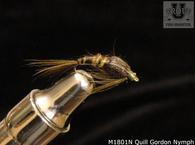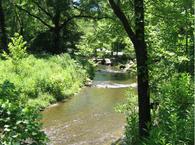
The Mad River is formed by several spring creeks just north of Campbell Hill near the city of Bellefontaine and flows approximately 60 miles southwest to Dayton where it joins the Great Miami River. Like many of the Ohio Rivers, there is only a portion of the river that remains cold enough to support a good population of trout including some brook trout. That portion is the upper section from Campbell Hill to an area near Springfield, Ohio.
For the most part, the water on the Mad River is clear and the river is covered with overhanging tree limbs. This often creates a challenge for fly fishermen to reach the browns that are lurking in the undercut banks.
The Mad River was the first river in Ohio to be stocked which started in 1880s. Today it continues to be stocked with 6” to 8” brown trout by the Ohio Department of Natural Resources (ODNR) Division of Wildlife. These stocked trout supplement the browns and the few brook trout that are naturally reproduced in the Mad River. Although the Mad River is not the most scenic river in Ohio, there are some really nice brown trout caught every year; and on rare occasions browns have been caught up to 25” in length. (Or so I am told.) It has a minimum of 12” in length and the daily limit is two trout.
Fly Fishing the Mad River:
Fly fishing is good on the Mad River, since the favorable pH resulting from the spring creeks feeding the Mad, provide for good hatches of mayflies, tricos, caddis flies, and other aquatic insects. The water is clear but there is a great deal of moss on the bottom providing cover for the smaller trout. Due to the clarity of the water, the best approach is to fish the river is in an upstream direction, casting nymphs and streamers close to the undercuts or heavy cover. However, when there is a hatch taking place, the Mad will provide some good dry fly fishing. We always recommend the Perfect Flies that available here.
Spring Fly fishing on the Mad:
The mayflies and little black stoneflies start to hatch in late February or early March providing for good early spring fishing. Also, streamers along the undercuts will be productive. Green Sedges will start to hatch in April followed by the Cinamon Caddisflies. Be careful when wading as the bottom can be slippery.
Fly fishing the Mad in Summer:
Starting as early as May, there will be some smaller hatches of March Browns and Sulphurs followed by the Brown Drakes. In the warmer weather of July, the Tricos will start to hatch and will remain hatching for the rest of the summer. Then of course, with the overhanging limbs so plentiful, the terrestrials will be productive along the banks.
Fall and Winter Fly Fishing:
There is a good population of Midges so be sure to have imitations of the larvae, pupae and adults in your fly box. Also, the hellgramites which are the larvae of the Dobsonfly work well in the faster sections of the Mad River. Imitations of the sculpins, minnows and other streamers will also be effective.
Public access points can be found at various locations along the river but usually they are found near the bridges.
The Mad River has plentiful hatches of Mayflies, Midges and Caddisflies. Here at Trout University, we have excellent imitations of these aquatic insects as well as imitations of baitfish and terrestrials.





